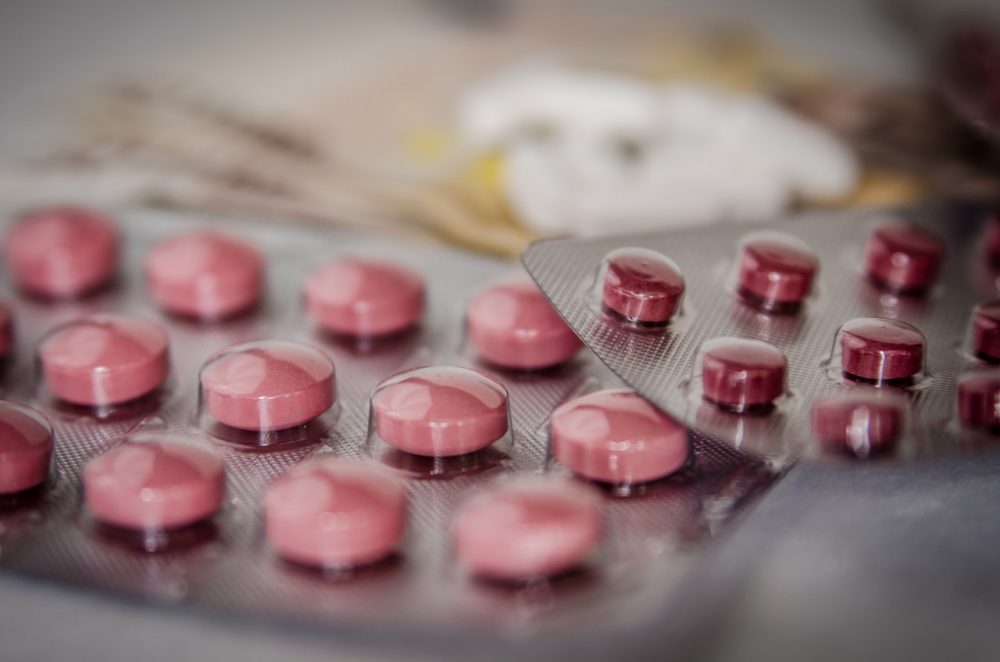News – Reports
How to catalyse innovation in anti-microbial resistance
29 November 2019
- Daniel Berman
A contribution to stimulate discussion at the ‘Antimicrobial Resistance: Managing the Risks and Identifying the Opportunities for Global Investment’ conference, London, 21 November 2019
Context
The European Bank of Reconstruction and Development should be lauded for its work supporting countries to scale up antimicrobial resistance (AMR) training and antibiotic stewardship and for its collaboration with the British Society for Antimicrobial Chemotherapy (BSAC) to create a space to explore investment-focussed solutions. The November 2019 conference — Antimicrobial Resistance: Managing The Risks & Identifying The Opportunities For Global Investment — is an ideal opportunity to look at how to ensure that innovation receives steady and predictable funding in order to deliver real change.
Overview
The latest World Bank report — Pulling Together to Beat Superbugs (2019) — encourages more action around the key areas of stewardship, surveillance, prevention, economic incentives and disincentives, and education and awareness. This represents much of current thinking that health systems need to be strengthened in order to reach One Health objectives, which are holistic and multi-sectoral.
At Challenge Works, we are committed to inspiring the best placed, most diverse groups of people around the world to take action on the issues that matter. We believe that globally working together to scale-up the full range of One Health interventions is necessary to address the public health challenges we face. Sustainable and realistic funding for the development of (and access to) new antibiotics and precise point-of-care diagnostics is a critical component of this — and, it requires more focused attention. After all, the persistent rise of drug resistant pathogens worldwide threatens us all, indiscriminately, and the human, economic and environmental costs are mounting (AR Threats 2019, ESPAUR 2019).
If we do not support innovation from inception to implementation, we create an Achilles’ Heel for One Health shared efforts. Without new diagnostics and antibiotics we doom all other strategies to failure.
The proposal
It’s time to do something bold. It’s time to initiate a new AMR Investment Fund: a sustainable financial mechanism to accelerate innovation and to create a dynamic market for diagnostics and antibiotics. Reaching £500 million ($647m) annually by year five, this proposed multi-stakeholder initiative would be shaped by several AMR frontrunner governments and delivered with the support of development and investment banks, private foundations and other funders.[1]
From the outset, the project would be a global effort to tackle AMR, serving both high-income countries (HICs) and low- and middle-income countries (LMICs), and the scope would build over time. The fund could be a blend between hard and virtual commitments — consolidated funds on the balance sheet would enable better negotiation of terms and guarantees, while other commitments could be made up of the existing procurement funds allocated by national governments. LMICs could be covered by both national government and Overseas Development Aid funds, some of which have already been allocated.
Initially, the emphasis would be on supporting the urgent development of diagnostics and antibiotics, with the focus then shifting towards market guarantees and incentives. Incentives would be purposely designed to immediately address the dearth of realistic “pull” mechanisms that are at the heart of why promising projects and companies cannot attract the timely investment needed to progress and bring their products to market.[2] It would supplement the hugely impactful funding already from CARB-X and drive steady income to GARDP, FIND and other institutions and companies leading antibiotic and diagnostic development projects.
Further, the fund design would take the best of proven institutions and initiatives like Unitaid (with its steady predictable source of funds), Gavi, the vaccine alliance (known for its close collaboration between funders and industry, making a substantial impact in disease prevention in LMICs) and The Global Fund (for mobilising investment at scale and supporting programmes designed by countries themselves), whilst also drawing on the learnings from finance and investment modelling efforts and projects currently underway by key stakeholders like Wellcome Trust, the UK, German and US governments, the European Investment Bank/World Health Organisation and proprietary pharmaceutical companies, amongst others.

Why now?
1. Almost four years since Jim O’Neill’s AMR Review, the global Market Entry Rewards system (and concept) remains unrealized. Though the need for disruption is urgent, the business model underpinning both antibiotic and diagnostic development continues as is. The efforts of CARB-X and the likes of the UK’s pilot project — that will deploy new service contracts that guarantee income for pharma companies for up to ten years, based on the value of the products to health systems rather than on volume — are the types of public leadership and “pull” incentives needed to inspire innovation, but more is still needed. Indeed, these delinking efforts would have a greater chance of success if they go beyond national confines and are plugged into a cross-sector, cross-border global agenda (linked via the AMR Investment Fund). As big pharma and biotechs continue to retreat from this space, a coalition of multiple countries and alternative partners could create the necessary paradigm shift.
2. Funding, support and market access are a minimum requirement for innovations to reach patients. Though the situation for diagnostics is less dire than that of antibiotics, given the risk and level of capital investment are lower, the lack of a market is holding back product innovators. We know this first-hand from the companies and teams of innovators competing in the race to win the Longitude Prize. Time and time again they struggle to scale up their projects, unable to raise adequate development funds from investors (despite the rising public health demand). The exception is that some products are designed exclusively for the most lucrative markets.
3. Parallel efforts are necessary to deliver on One Health commitments. Recent policy documents and research reports (World Bank 2019, WHO/IACG No Time to Wait 2019) have focused on the need to support national governments to create effective stewardship across human, animal and agriculture sectors. Increased financial support will be essential to realise these objectives. However, there is a distinct need to fund access and innovation of new tools as well as health systems strengthening.
4. Focusing simply on reduction of volume of antibiotics will not be enough. Recent studies (like CDC’s Antibiotic Resistance Threats in the United States, 2019) confirm that knowing when to use antibiotics is becoming even more important; sanitation, infection control, behaviour change and awareness can only go so far. Medical practitioners, particularly at the primary care and outpatient levels, need the tools to enable them to be more “AMR-Smart” (World Bank, 2019). Innovation is key to changing course, and not just kicking the proverbial can down the road.
What’s next?
The need to develop the AMR Investment Fund is urgent and creating a consolidated financial mechanism, that will consistently raise the necessary funds, is a critically important step. New product development, both diagnostics and therapeutics, to address AMR will continue to wane until there is a dramatic change in terms of reliable and predictable funding.
From the outset, the AMR Investment Fund needs to be anchored by at least several countries that collectively represent an attractive initial market for the procurement, marketing and selling of these new products. Governments, businesses, funders and investors all need to be part of this solution to change the current lacklustre market and investment dynamic. They are currently working in silos and it would be to everyone’s advantage to coalesce existing efforts.
We propose the following “principles and potential next steps” as essential to the development of the proposed AMR Investment Fund and welcome increased input during this crucial stage of concept and model/format development. The principles are informed by our long history as Challenge Works, which focuses on stimulating innovation in areas where it is needed most, and by our work running the £8m Longitude Prize, which has shown us that the lack of a reliable funds for innovation and procurement is impeding much-needed innovation in efforts to tackle AMR.
Principles and potential next steps
1. New commitments from governments and institutions leading the AMR fight are needed in order to facilitate innovation and to overcome the failed market for antibiotics and AMR-related diagnostics.
2. Agreement that the product priorities should be set according to WHO and fund member countries.
3. Leadership from governments with the support of development banks to explore different mechanisms to finance the fund, ensuring that predictable sources of investment will be available over the middle- and long-term.
4. Creation of a working group of fund members to identify, agree and explore funding mechanisms that would be purposefully designed to assure innovation and procurement/access. Activities could include pre- and post-product development support and clinical validation, product registration as well as schemes to create markets through innovative reimbursement and advanced market purchasing guarantees.
5. Based on the AMR Investment Fund’s initial success, scale-up could be achieved through established communities of countries such as the G20.
Let’s talk
This document has been designed to raise awareness about the need for an investment mechanism and stimulate the debate on how to overcome the market challenges that have come to characterise the last three and a half years. Now is an opportunity to seed long-term change and to work holistically and collaboratively on this complex global challenge.
REFERENCES
-
This is in line with estimates of required annual R&D in DRIVE-AB (who estimate an additional $250m), the O’Neill AMR Review ($400 million), World Bank ($400 million) and the OECD ($500 million).
-
These should resemble the ~$200 million per year for 5 years outlined in DRIVE-AB and the O’Neill AMR Review.
